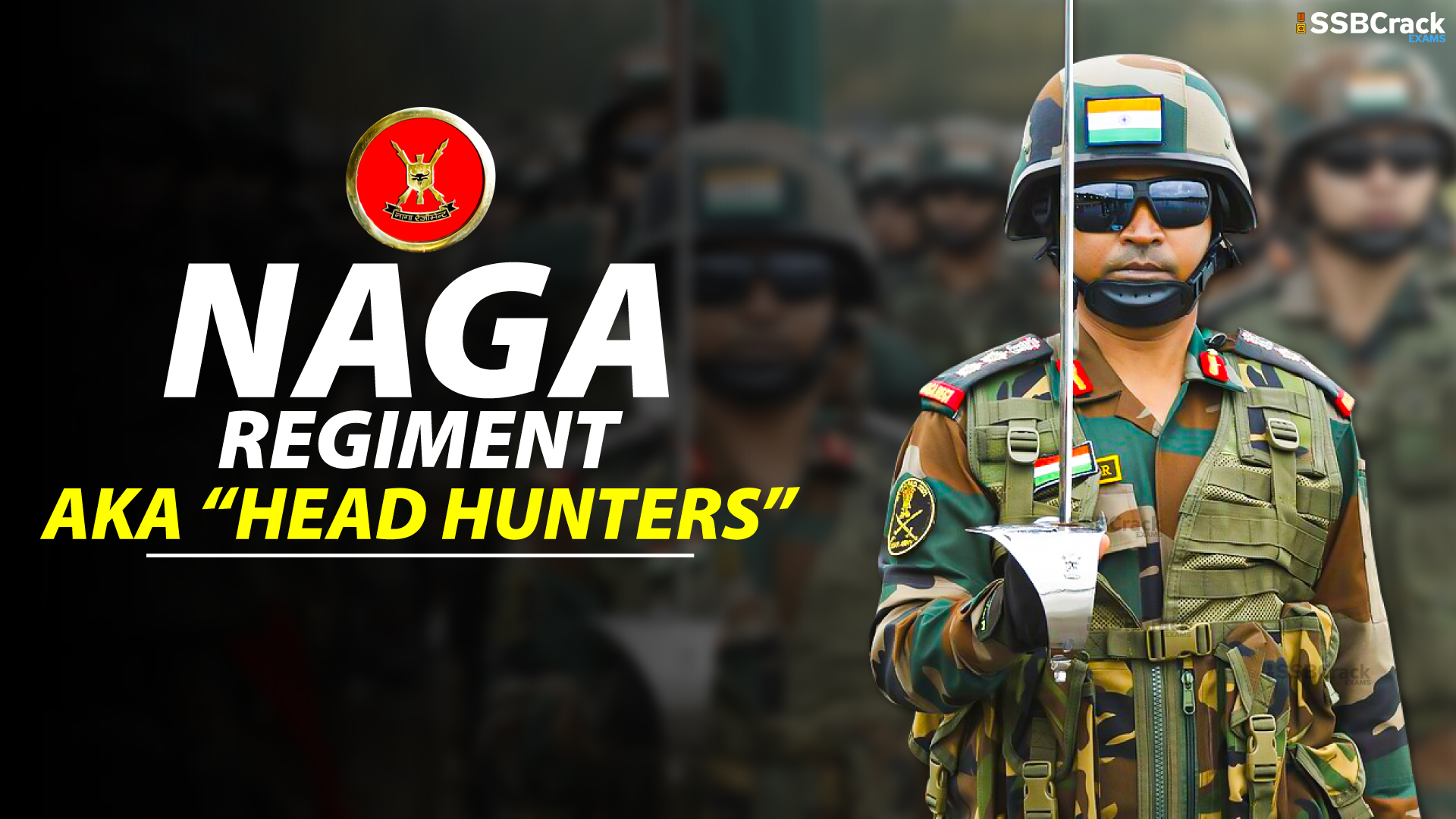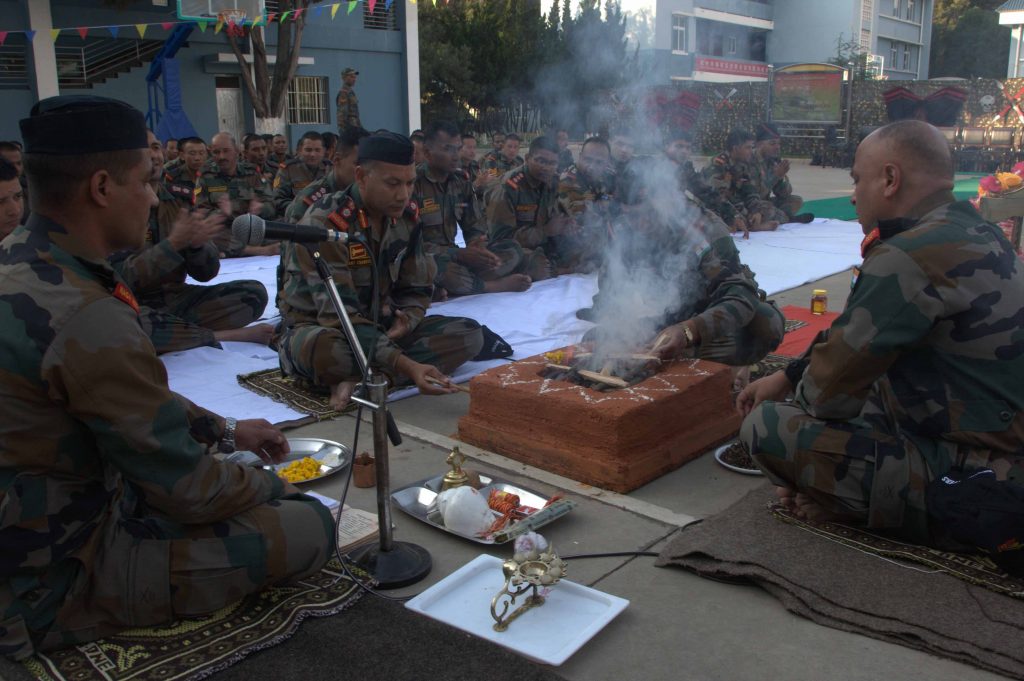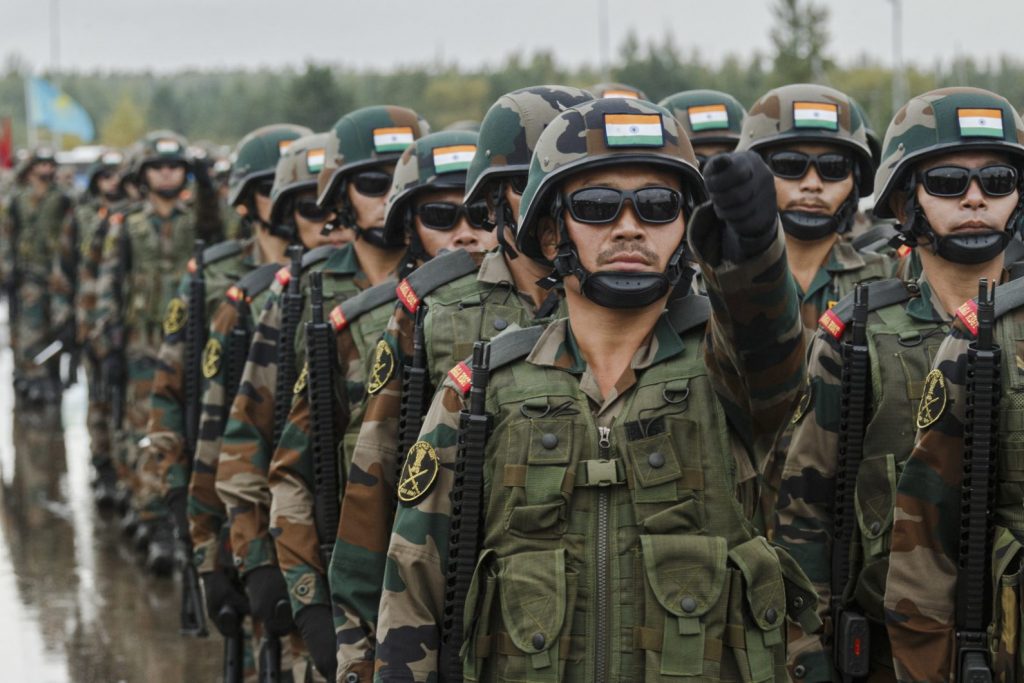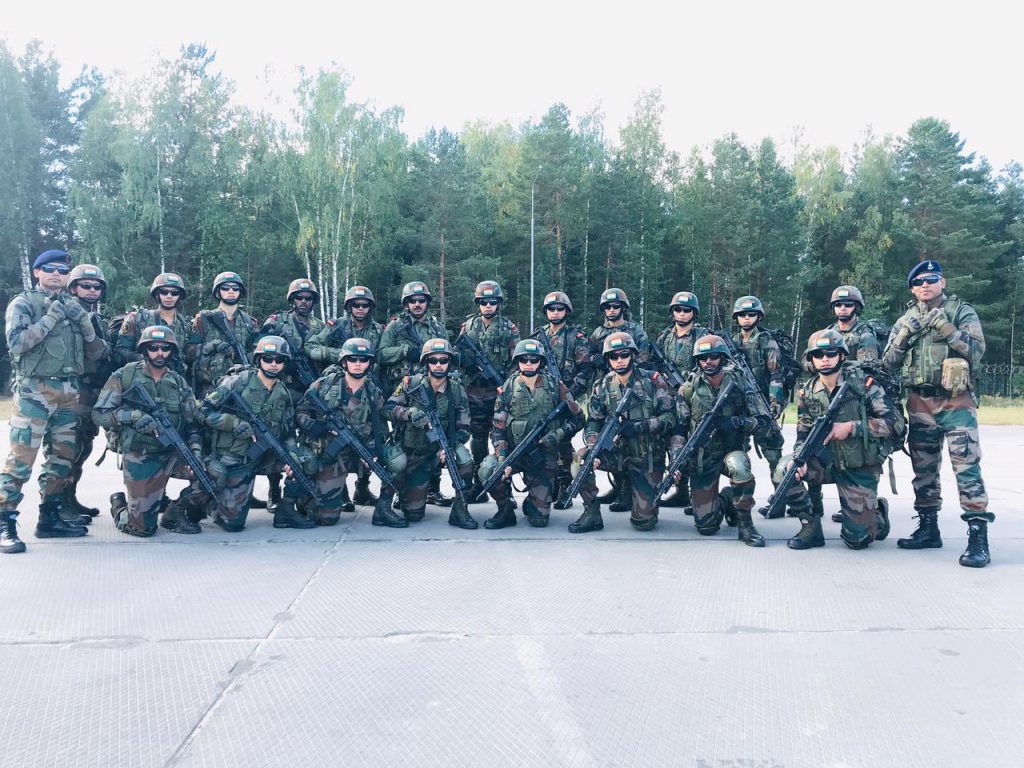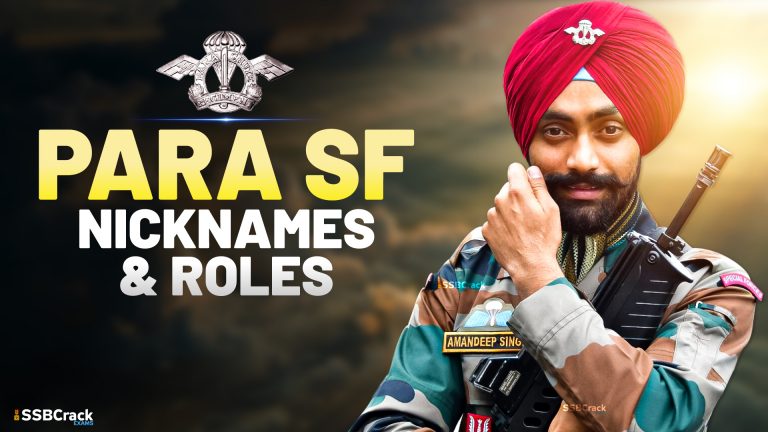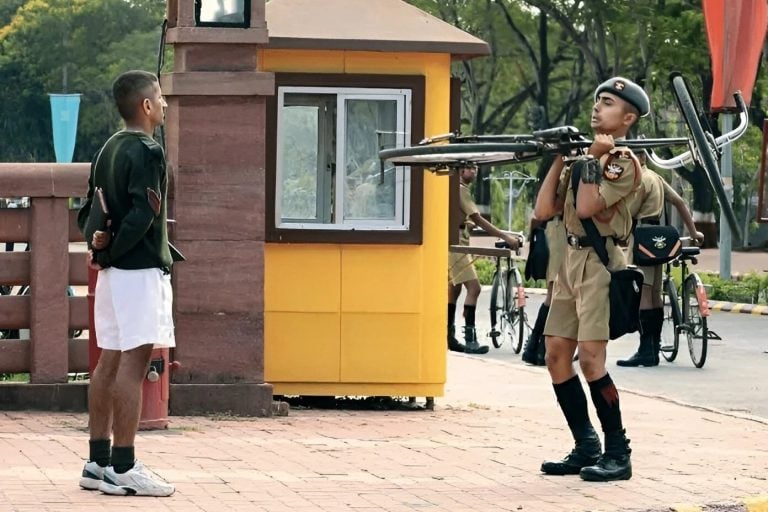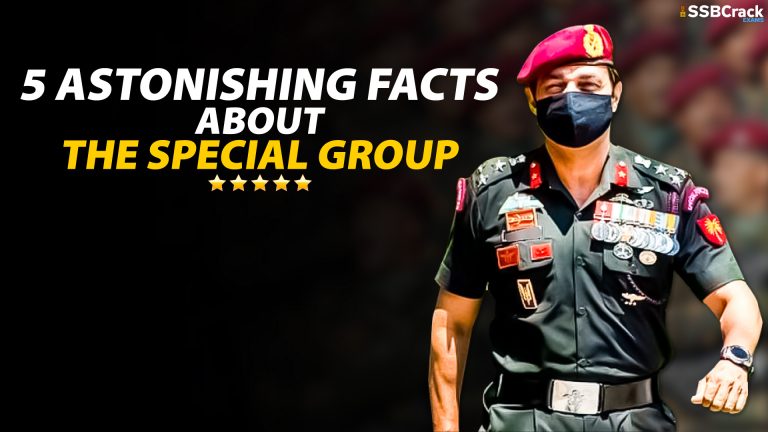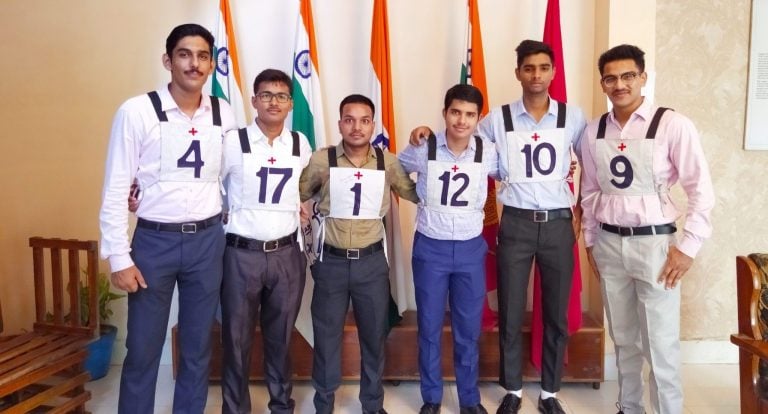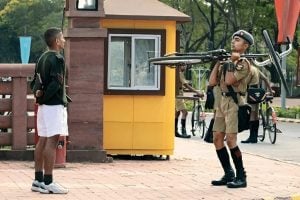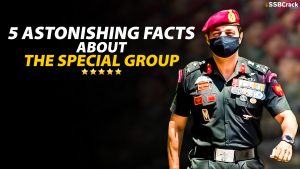Jai Hind future warriors today we are going to discuss in detail the Naga Regiment of the Indian Army also known as ‘Headhunters’. We will be covering the following topics:
- Facts-in-Brief About Naga Regiment
- History of the Regiment
- Units of the Regiment
- Decorations of the Regiment
- Why are they called ‘Headhunters’?
- Participation in Kargil War
- A TERROR-ising Story for Pakis
- Conclusion
Facts-in-Brief About Naga Regiment
- Naga Regiment, a line infantry regiment, has been active since with its primary role that being of an infantry comprising of three battalions.
- Motto of the regiment is “Parakramo Vijayate” which translates to ‘Victory to Valor’. The battle cry of the regiment is ‘Ji Durga Naga’.
- The regimental centre is located in Ranikhet, Uttarakhand. A pair of crossed Naga spears and a dao( a cutting weapon used by the Nagas), with a shield bearing a mithun(bull) head form the regimental insignia.
- Colors of the Regiment: The colours are gold that represents the rising sun, green stands for infantry while red stands for authority.
History of the Regiment
The insurgency in the late 1950s in Nagaland combined with the Naga youth taking arms against the government. Then, a convention of Naga people was organized to bring about peace in the north-east area. The charter of demands put forward had several demands. Prominent among other demands were statehood for Nagaland and a separate unit for the Naga people in the Indian Defence Forces. Statehood was attained in 1963 and subsequently, the Naga Regiment was raised seven years later in 1970.
Such was the spirit that in 1 Naga raised on 1st November 1970 at Kumaon Regimental Centre, Ranikhet were 69 Naga rebels and ex-militants who joined the Indian Army. Some were even directly appointed as junior commissioned officers.
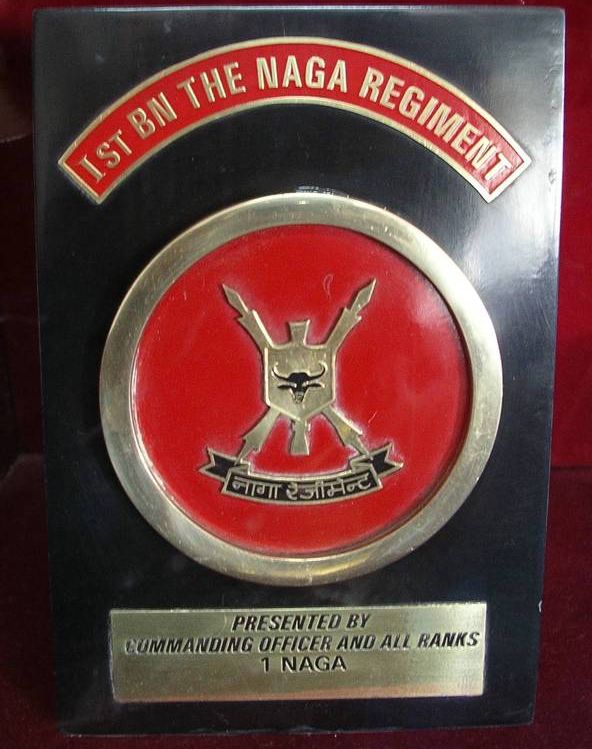
Unfortunately, the training was still in process when the eastern border became a turbulent area requiring the immediate deployment of the Naga Regiment. The youngest regiment which was not fully trained and ready for combat found itself on the battle-front in the Indo-Pak war of 1971. However, the innate skills of the Nagas and the Kumaonis, Garhwalis and the Gorkhas kept the honour of the national flag high. Their inordinate valour led to the raising of another Naga battalion – 2 Naga – on 11 February 1985 at Haldwani.
Units of Naga Regiment
There are three battalions of Naga Regiment in the Indian Army and one battalion in the Territorial Army. They include:
- 1st Battalion
- 2nd Battalion
- 3rd Battalion
- 164 Infantry Battalion (TA) (Jakhama, Nagaland)
Composition of Troops (Rough Approximation)
- The regiment’s troops consist of 50% Nagas, while the Gorkahas, Garwalis and Kumaonis consist of the other 50% in equal numbers.
Decorations of the Regiment
The Naga Regiment with its furiousness and natural warriors of indomitable spirit and resoluteness in extreme adversity won several decorations and awards. These include:
- 1 Maha Vir Chakra
Sepoy Imliakum Ao surprised and killed the sentry guard of the outer perimeter of the Mortar position. Then he stormed the Mortar position, killed 4 enemy soldiers and captured 3x82mm and 4x120mm Mortars. For his bravery and devotion to duty, Sepoy Imliakum Ao was awarded Mahavir Chakra. His award citation reads “His determination, grit, cool confidence and raw courage in the face of the enemy was exemplary in the true spirit and traditions of the Indian Army and the Regiment which was a factor in eliminating the enemy from the almost indomitable mortar position”.
- 8 Vir Chakras
- 1 Kirti Chakra
- 6 Shaurya Chakras
- 1 Yudh Seva Medal
- 1 Vishist Seva Medal
- 48 Sena Medals
Why are they called Headhunters?
The Naga tribals traditionally used to keep skulls for two reasons:
- Head of Ancestors: As a mark of respect for dead ancestors
- Head of Enemy: As a mark of victory against the enemy
As most of the recruits are from Naga tribes thus it was natural that the regiment was nicknamed ‘Headhunters’.
The regiment has lived up to their nickname striking fear amongst the enemies on both sides of the borders. Moreover, Naga’s had a reputation of not taking any prisoners thus inducing terror amongst the enemies (for sure this regiment made tickets from earth to hell and sold it very cheaply).
Participation in Kargil War
Two Naga battalions took part in the Kargil war – 1 Naga under 56 Mountain Division and 2 Naga under 79 Mountain Brigade.
2 Naga played a very crucial part in capturing the famous Tiger Hill during the night of 3rd/4th July 1999 and then the strategic Pt 4875 complex. During the attack on Tiger Hill, 2 Naga held the left flank while 8 Sikh held the right flank. 18 Grenadiers captured Tiger hill. On that single night, 2 Naga lost 30 men and over 80 were injured
During the operation to capture Pt 4875, 2 Naga captured Twin bumps feature by 1200 on 6thJuly. Then there was a Heavy Mortar position, which had 82mm and 120mm mortars and it was threatening the National highway and Dras town. After which the heroics of Sep Imliakum Ao saved the situation
A TERROR-ising Story for Pakis:
When the Naga Regiment took over the post at LOC, the Naga were given the customary welcome by firing at shells at their forward post. The Paki soldiers for two consecutive nights threw hand-grenades and ran back. The Naga soldiers didn’t retaliate at first, but then after two days decided it was enough and that Pakis needed to be taught a lesson, so they laid ambush and captured two Paki soldiers. They tied the Pakis to a tree, lit a fire and performed a traditional Naga dance! Then they chopped a leg off one of the Paki soldiers and literally barbecued it over the fire. Both the Paki soldiers were let off the next morning but not before they overheard a Naga soldier asking his JCO to let them remain as they had tasty legs but JCO insisted that they were weak and they needed strong ones. This scared the Baluch Regiment on the Pakistani side so much that they were nowhere to be seen near the LOC till the Naga battalion was posted there for the next 3 years.
Conclusion
Hope this post was informative for you about one of the most dangerous regiments not just in the Indian Army but in the world.
For more such posts related to defence exams and SSB interviews stay tuned.
Jai Hind
Also Read: Operation Apache By 9 PARA SF Regiment
